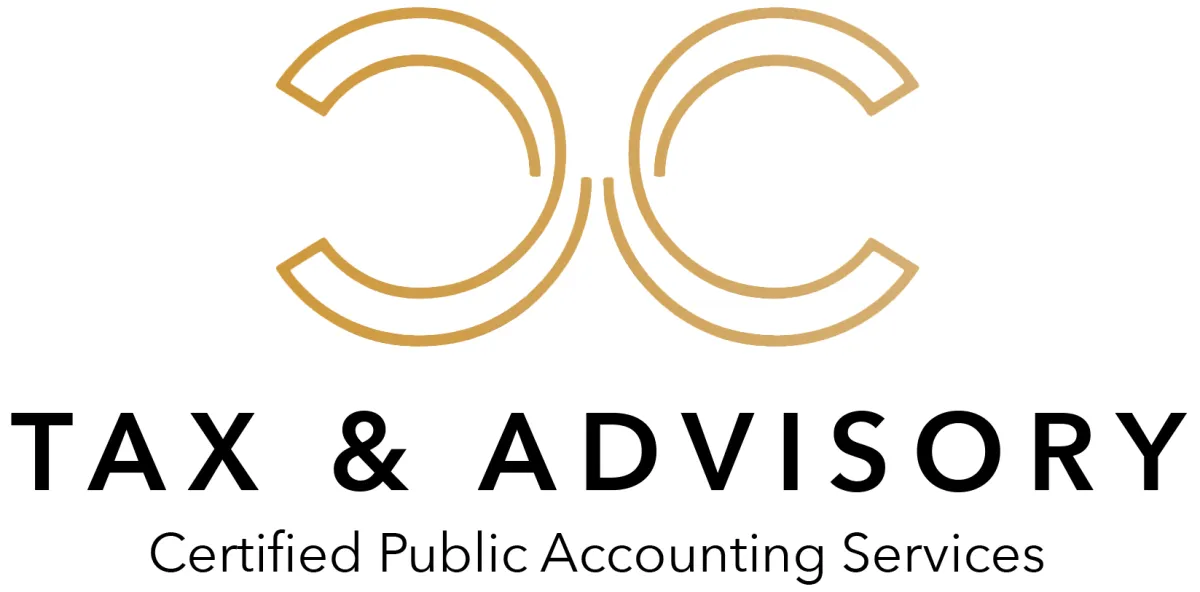

Blog
We strive to get to know you and your business. To understand your future goals and to provide a proactive approach to help you achieve those goals.
We strive to get to know you and your business. To understand your future goals and to provide a proactive approach to help you achieve those goals.

Retirement Planning
Whether you’re a current or aspiring business owner, you will have to grapple with this question: which entity type makes the most sense for my business needs? Those who choose to strike out on their own as a sole proprietor may wonder if they are missing out on benefits available to companies that are owned and run by more than one person. Sole proprietors may be surprised to learn that many of the tax advantages available to larger entities are also available to Schedule C sole proprietors—including funding retirement plans.
When you’re considering setting up and contributing to a retirement plan, remember that any tax benefits you find will involve trade-offs. The most obvious one is the trade-off between paying taxes now versus later. Another common trade-off is choosing between increased tax benefits and decreased administrative overhead—the plans with the most benefits also tend to be the most complex and require more administrative support to implement and maintain.
As a sole proprietor, you will face different considerations than other business owners when weighing the pros and cons of varying types of retirement plans. Working with a professional can provide access to the expertise you need to select the best plan for retirement and for your business’ overall tax strategy. Read on for an overview of what sole proprietors need to consider when evaluating each type of retirement plan.
TRADITIONAL OR ROTH IRA
These plans are the most basic level for sole proprietors—they are easy to set up and easy to fund. Even if you have a second job outside of your sole proprietorship and qualify for an employer-sponsored retirement plan, you can still contribute to traditional or Roth IRA. The catch is that these plan types have the lowest contribution limits. In 2023, individuals can contribute up to $6,500 per year. Individuals over age 50 can also add on a “catch up” contribution of $1,000.
If you are considering a Roth IRA, what do you need to know from a tax perspective? Roth IRA contributions offer tax-free growth and distributions, but they do not offer an immediate tax deduction. Unfortunately, high-income taxpayers may not be eligible—the allowed contribution for a Roth IRA begins to phase out at $138,000 for single taxpayers (and $204,000 for married filing jointly). However, Roth IRAs can be an excellent option for middle income taxpayers whose sole proprietorship is more of a side hustle. If a taxpayer maxes out their employer plan year after year, they may not realize they’re setting themselves up for a higher tax bracket—and therefore a higher tax liability—when they retire. Making Roth IRA contributions instead can provide some tax-free distributions during retirement.
How do these contribution limits apply to traditional IRAs? One main difference is that traditional IRA contributions are tax deductible to sole proprietors who are not covered by an employer plan—in other words, if the business is the taxpayer’s sole source of income. If the sole proprietor is also covered by an employer plan, the deductions available will depend on the taxpayer’s adjusted gross income (AGI). Another key difference is that traditional IRAs do not have income limitations. While the contribution may not be deductible for high-income earners, it will not be penalized as long as it does not exceed the annual contribution limit. Traditional IRA funds are taxed when they are distributed, and both contributions and earnings are taxable.
Lastly, sole proprietors can also open a traditional or Roth IRA for a non-working or underemployed spouse. If the couple files a joint return and the spouse’s income is less than the annual contribution limit, the working spouse can contribute to the retirement account on behalf of the non-working spouse. To qualify, the working spouse’s income must equal or exceed the total combined traditional or Roth IRA contributions for both spouses.
SEP IRA
Simplified Employee Pension (SEP) IRAs allow employers to make deductible contributions into employee IRA accounts. This actually means that a self employed sole proprietor is allowed to contribute to their own SEP IRA.
How does an SEP compare to other types of IRAs? First, the contribution limit is higher: in 2023, the maximum is $66,000 or 100% of compensation, whichever is lower. Secondly, the contribution amounts cannot be withheld from the employee’s W-2 wages, but the contribution is also not included as compensation under Box 1 W-2 Wages.
Additionally, with SEPs the employer must contribute the same percentage of compensation to all eligible employees—that is, any employee over age 21 who has worked for the employer for at least three out of the last five years and who has received at least $650 in compensation in that tax year. Lastly, SEP IRAs can be set up and funded any time before the extended due date for tax returns, which provides more flexibility than a traditional or Roth IRA.
Overall, because of the requirements for employer contribution percentages, SEP IRAs tend to work best for very small sole proprietorships or those who employ family members and want to help fund their retirements.
SIMPLE IRA
SIMPLE IRAs (Savings Incentive Match Plans for Employees) occupy the middle ground between plans that work best for small sole proprietors and plans for businesses that are not quite large enough to justify a qualified retirement plan like a 401(k). To set up a SIMPLE IRA, sole proprietors must be eligible employers, meaning they must have 100 or fewer employees who received at least $5,000 in compensation within the last year. If the employer exceeds 100 employees, they must switch to a qualified plan.
The SIMPLE plan must also be offered to any employee who received at least $5,000 from the sole proprietorship within the last two years and who expects to receive at least $5,000 in the current year. Sole proprietors themselves are considered both the employer and an employee from the perspective of the SIMPLE plan.
With SIMPLE plans the employee can choose how much to defer, either a percentage of compensation or a specific dollar amount. The employer must either make:
A dollar-for-dollar matching contribution of up to 3% of the employee’s compensation, or
A non-elective contribution of up to 2% of the employee’s compensation
Lastly, SIMPLE IRAs must be set up between January 1st and October 1st of the year for which the contributions will apply.
QUALIFIED PLAN
Just like other business entities, sole proprietors can also opt to create a qualified retirement plan. “Qualified” simply means that the plan adheres to the requirements set by ERISA (the Employment Retirement Income Security Act of 1974) and does not discriminate in favor of highly-compensated employees.
Though a qualified plan can be a major investment, both in terms of money and administration, larger sole proprietorships may find it worthwhile due to these plans’ flexibility, higher contribution limits, and appeal to employees. Much like SEP and SIMPLE IRAs, contributions to qualified plans are deductible for the employer and enable tax deferral for the employee.
For 401(k) plans specifically, in 2023 the maximum contribution is $22,500 with an additional $7,500 available as a catch-up contribution for employees aged 50 and older. Employers can match employee contributions up to a total combined deferral of $66,000 (or $73,500 with the catch-up) or 100% of compensation—whichever is lower.
With qualified plans, employees can contribute through “elective deferrals,” which are excluded from their taxable income. This is also true for sole proprietors as employees of their own companies—they can choose to make self-employed deferrals and employee matching contributions for their own retirement accounts.
Qualified plans typically work best in larger sole proprietors that are looking to add benefits to attract or retain employees. Ideally, the business is not “top-heavy” since qualified plans are designed not to show favor to highly-compensated employees. If a sole proprietor is primarily looking to provide retirement benefits to employee-friends, employee-relatives, and themselves, a non-ERISA plan will likely be a better fit.
SOLO 401(K)
Sole proprietors looking for the benefits of a 401(k) without the administrative overhead can consider a Solo 401(k). To set up this type of plan, the sole proprietor just needs an EIN. The sole proprietor also cannot have any employees except their spouse. If a couple owns a business and does not intend to employ anyone else, this could be an ideal retirement plan option. The Solo 401(k) can be set up as either a traditional tax deferral plan or as a Roth-style plan where the contributions are taxed before entering the retirement account.
SUMMARY
Sole proprietors can take advantage of most retirement plans available to other entity types, though their approach to selecting the most advantageous one will be different. The right plan for you will depend on a variety of factors—whether you are looking for a tax deferral plan or tax-free growth and distributions, the size of your staff and relationship to your employees, and even your future plans for company growth.
Choosing the right retirement plan for your business comes down to asking the right questions and understanding the pros and cons of each option. For guidance in incorporating a retirement plan into your business tax plan reach out to our office today!
Our Mission
To develop meaningful relationships with our clients. To not only be your CPA, but your trusted adviser and teammate in all your tax, financial and business decisions. As your family and business grow, we aim to provide you with peace of mind knowing that we are with you every step of the way.
Who We Help
Our clients range from individual taxpayers to small and medium-sized companies. We offer them effective solutions to existing or potential tax problems, assist them with the development of strategies for minimizing tax liabilities, and our tax compliance services include the preparation of federal and state tax returns for all types of entities. In addition, we also provide assistance to our clients with audits and representation before different taxing authorities. We work closely with our clients and not just on the preparation of their tax returns, we also strive to formulate and build on strategies to reduce taxes and preserve wealth.
Copyright 2023 - CC Tax & Advisory - All Rights Reserved
Privacy Policy
https://storage.googleapis.com/msgsndr/UfcbtlxakDyrvjIAbxt9/media/62750e05d4f0e5576ed58cfe.gif
https://storage.googleapis.com/msgsndr/UfcbtlxakDyrvjIAbxt9/media/62750e05d4f0e52effd58cfd.jpeg



